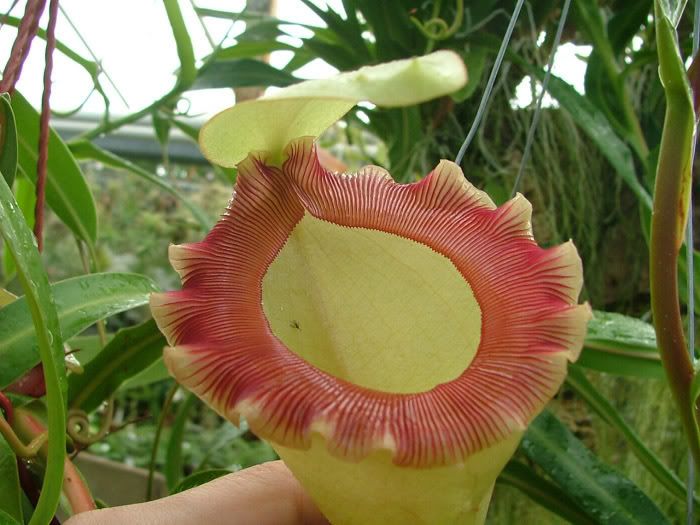Most "
N. ventricosa" plants in cultivation are actually a hybrid population, involving
N. alata, and possibly another species. They are very complex back-crosses, with some plants resembling the traits of one species or another. It seems to be a lowland plant as well, growing best in warmer conditions and not being able to withstand a mild frost. Generally, they have spathulate leaves less than 6 inches in length, which are relatively soft. The plants can be terrestrial, or nearly so.
The true species,
N. ventricosa is at least twice the size of these other plants, and has long firm lanceolate leaves, well over 8 inches in length, also very stiff, with large pitchers about a foot long, and extremely ventricose, and nearly woody, like
N. lowii. According to John Turnbull, it was found growing very high up in some trees, a true epiphyte, and the biggest Nepenthes in Luzon, which grows best in cooler conditions, and is very slow, and does poorly in warm, lowland conditions.
The peristome is also unique, and doesn't ride up under the lid.

When it rests, the peristome is nearly parallel to the ground from back to front, with seveal "points" from the wide peristome. I know of only one clone in cultivation, which goes by the name "porcelain" form, perhaps the form known as "alba" may be the same thing, not sure yet. - Rich


